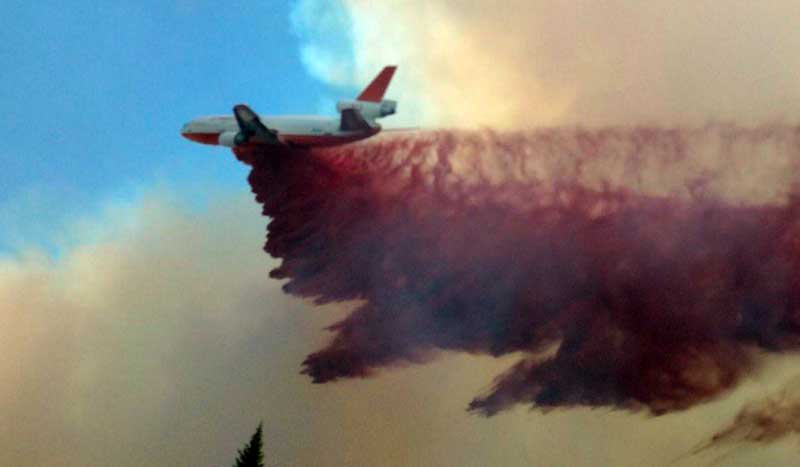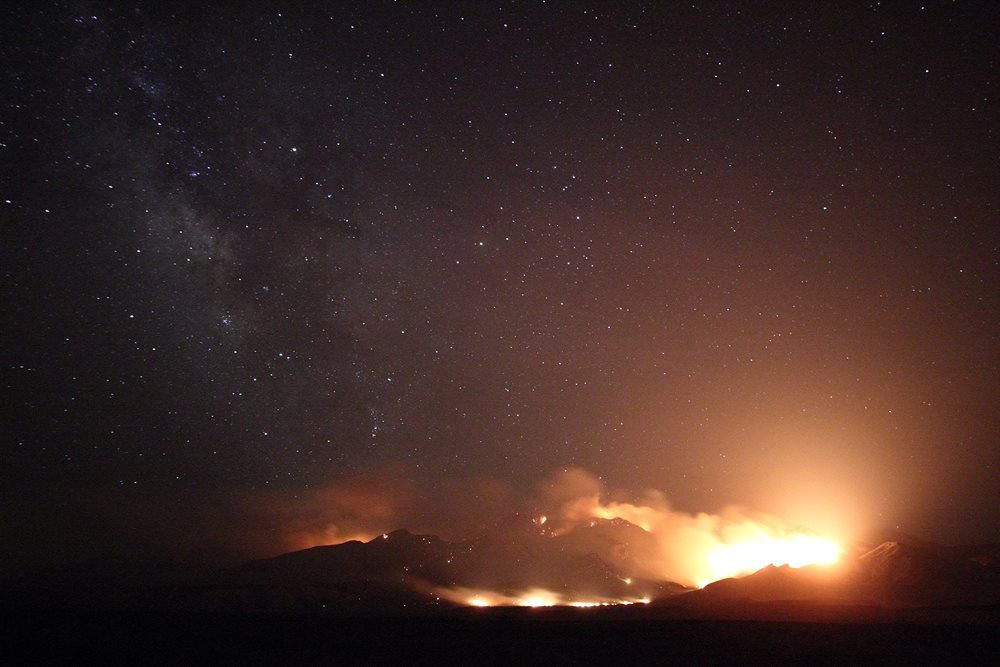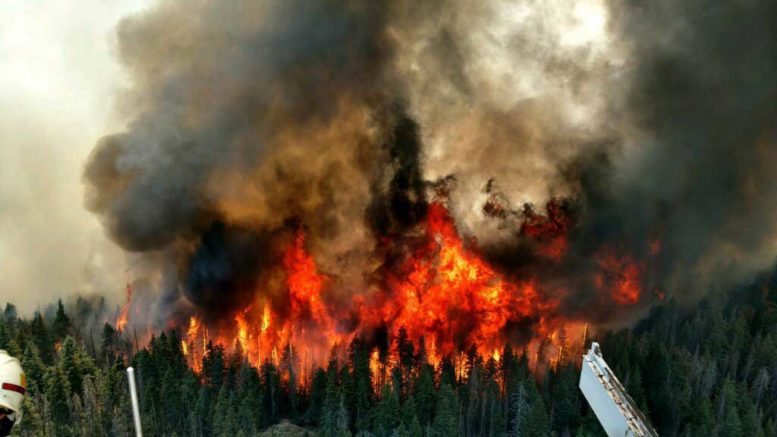Scopes potentially suffer heat damage but no direct fire damage
By Jon Johnson
MOUNT GRAHAM – Between days of backbreaking work coupled with years of planning and defense building, the Mount Graham International Observatory (MGIO) narrowly escaped the approaching Frye Fire early Sunday afternoon when multiple fire retardant slurries from air resources helped halt the fire’s progression. According to sources at the MGIO, the fire crossed the road and encircled the observatory.
At about 1:30 p.m, images from cameras on the telescopes captured the oncoming fire and smoke. Firefighters coordinated with air resources to drop the slurries, and by 2:30 p.m. the hot spots were weakening and only smoke remained. Ground crews then reentered the area by 3:20 p.m. There is still staff at the observatory maintaining the equipment.

Contributed Photo/Courtesy LBTO (K. Newton): An air tanker makes a fire retardant slurry drop next to the MGIO to help stop the fire and save the observatory.
MGIO Director Eric Buckley said the telescopes potentially suffered heat damage, but contrary to what was being mentioned by some on Twitter, none of the scopes, including the Vatican Advanced Technology Telescope, suffered direct fire damage.
“The fire has come very close,” Buckley said. “It did come very close to the complex. We may have suffered a little heat damage but no actual fire damage.”
According to Buckley, the Frye Fire actually posed a greater danger to the observatory than the Nuttall Complex Fire in 2004, which burned roughly 30,000 acres.
“This fire has gotten much closer to the facility than the Nuttall Complex Fire,” he said. “This fire has gotten way too close for comfort.”
Cabins threatened

Contributed Photo/Courtesy LBTO (K. Newton): The view of the Frye Fire on Sunday from the MGIO.
In addition to the observatory, the cabins at Old Columbine and Bible Camp are currently threatened, but there have been no reports of any structures burning as of 4:30 p.m., Sunday, according to Evan Burks, a public information officer working for the Type 2 Southwest Incident Management Team, which took over operations Sunday morning.
The protections in place include back burn efforts, sprinklers and helicopter support to help reinforce the more than 15 miles of fire lines. The fire has spread northeast of Ash Creek Falls and into Oak Flat.
Additionally, cabin owners in Turkey Flat previously were told they had until Monday to remove any items they wanted from their cabins and to clear an area of 30 feet around their cabins. The closure order now extends throughout all campgrounds and Forest Service roads in the Pinaleno Mountain Range.
As of 9 p.m., Sunday, the size of the fire has been updated from the 6,305 acres previously listed Sunday morning to 9,100 acres as the fire continues to grow in the relative low humidity and high heat. Containment was still listed at 16 percent with a projected containment date of July 30.
The Frye Fire was started by lighting June 7, at about 2:45 p.m.
Eric Burk and Brooke Curley contributed to this report

Eric Burk Photo/Gila Valley Central: The Frye Fire burns Mount Graham as the Milky Way and the constellation Scorpio pass overhead in this 20-second exposure taken around 11 p.m. on June 17.













.jpg)